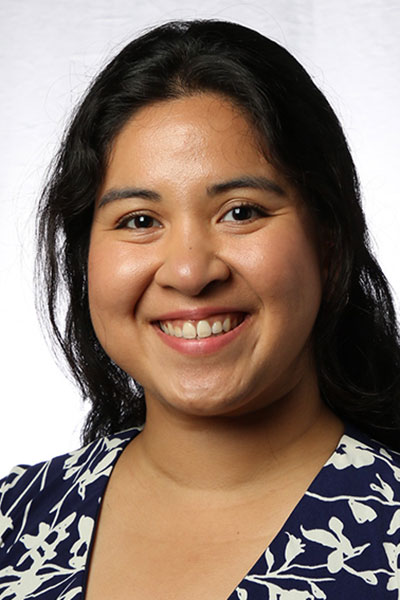A panel of experts discussed the latest findings related to the Precision Medicine in Diabetes Initiative, a joint effort of the American Diabetes Association® (ADA) and the European Association for the Study of Diabetes (EASD), during the Joint ADA/EASD Symposium—Precision Medicine in Diabetes (PMDI).
The session can be viewed on-demand by registered meeting participants at ADA2023.org. If you haven’t registered for the 83rd Scientific Sessions, register today to access the valuable meeting content through August 28.

Rochelle N. Naylor, MD, Associate Professor, Section of Adult and Pediatric Endocrinology, Diabetes and Metabolism, University of Chicago Medicine, began the session with a discussion of precision medicine in monogenic diabetes, including the establishment of the University of Chicago Monogenic Diabetes Registry and findings from studies carried out through the registry.
While monogenic diabetes has proven to be an area where precision medicine has been shown to be feasible and is practiced, significant challenges remain, she said, such as overcoming barriers to genetic testing and increasing equity and diversity in research studies. Analyses of registry data showed that significant delays in diagnosis occurred between initial suspicion for monogenic diabetes and genetic testing.
“Around two-thirds of those with a known genetic cause had research-based genetic testing completed rather than clinical testing due to insurance coverage difficulties,” Dr. Naylor said. “Of those who were found to have monogenic diabetes, significant delays in diagnosis were identified, which highlights the need for increased access to clinical genetic testing covered by insurance companies, specifically within the United States.”
Over the past few years, research-based testing has decreased as access to commercial-based testing has increased, she said. However, timely consideration and insurance coverage of genetic testing remain barriers to monogenic diabetes diagnosis.
“There is reason to get excited because precision medicine really is improving outcomes in people living with monogenic diabetes,” Dr. Naylor said. “But the challenges we face in monogenic diabetes will only be exacerbated in the more complex polygenic forms. So, as we move forward, we need to make sure we have robust intentional efforts to center the perspectives of people living with diabetes as we implement precision treatments and prognostics, and to ensure equity in diabetes precision medicine initiatives.”

Heba M. Ismail, MB, BCh, PhD, Assistant Professor of Pediatrics, Indiana University School of Medicine, followed with an overview of ongoing efforts of PDMI working groups studying precision medicine in type 1 diabetes, including findings and insight into precision prevention from a systematic review of studies testing disease-modifying therapies and features linked to treatment response.
“The key question here was whether individual characteristics can be used to select participants for prevention at or around the time of stage 3 clinical diabetes. Specifically, we asked if individual characteristics have been robustly identified to select persons for therapeutic optimization,” Dr. Ismail said.
Of the studies analyzed, she said that a total of 14 papers focused only on precision analysis and an additional 43 included some aspect of precision analysis.
“The things we identified that were important—age, beta-cell function, and immune phenotyping—were not frequently tested for,” Dr. Ismail said. “And the studies did not pre-specify an analytic plan. Among the gaps we identified and limitations we need to address moving forward, and that we need to think about when we study prevention or design trials, are that we need to have the precision analysis pre-specified and we need to include more of a diverse population.”

Zhila Semnani-Azad, PhD, Postdoctoral Research Fellow, Harvard T.H. Chan School of Public Health, followed with a discussion of precision medicine in gestational diabetes mellitus (GDM), including efforts to identify gaps in the current literature and the need to better understand more targeted approaches for both women and their offspring exposed to GDM.
Among the recent studies she discussed was one in which investigators applied an innovative artificial intelligence-based prediction model to select predictive variables for GDM risk in Mexican women. Based on the selections, an artificial neural network approach was then applied to build a model to determine prediction risk for GDM.
“This study, though limited in generalizability, highlights the potential for using routinely collected variables and additional factors to better identify GDM, and perhaps at an earlier timepoint,” Dr. Semnani-Azad said.
Moving forward, studies need to integrate physiological heterogeneity, biomarker utility, subtype phenotypes, and risk prediction, in addition to existing criteria and strategies in order to better understand and develop more targeted approaches for GDM, she said.
“The evidence to date is generally of low-quality and sample sizes are small. There is a need to understand GDM in larger populations and more diverse groups of people,” Dr. Semnani-Azad said. “Further, we need to evaluate GDM with longitudinal biospecimens collection to enable multi-omics marker assessment. We also need to work toward standardization in laboratory practices and analysis.”

Shivani Misra, MD, PhD, Wellcome Trust Fellow at Imperial College London in the United Kingdom, concluded the presentations with a discussion of precision diagnosis efforts in type 2 diabetes, including findings from a systematic review of precision subclassification of type 2 diabetes that examined simple approaches for type 2 diabetes classification using routinely available clinical measures as well as complex approaches that utilize machine learning/genomics to subclassify type 2 diabetes.
Surprisingly, findings from the review showed that the machine-learning or clustering approaches for type 2 diabetes have been more robustly studied than the simple approaches, she said.
“I think we may have missed an opportunity in pursuing simple approaches because they are more likely to be implemented, and we obviously need to remember that four out of five people living with type 2 diabetes are in low- and middle-income countries, so if we’re going to make a material difference to those individuals we need the simple things,” Dr. Misra said. “We have made inroads in subclassifying type 2 diabetes—it’s a very exciting space right now. We need high-GRADE (Grading of Recommendations Assessment, Development and Evaluation) evidence studies with reproducibility of the most promising approaches, but there is a huge potential for study and innovation and equitable care delivery across ethnic groups.”